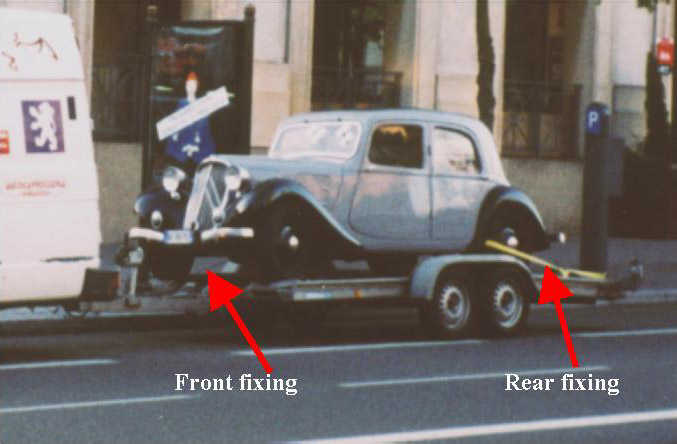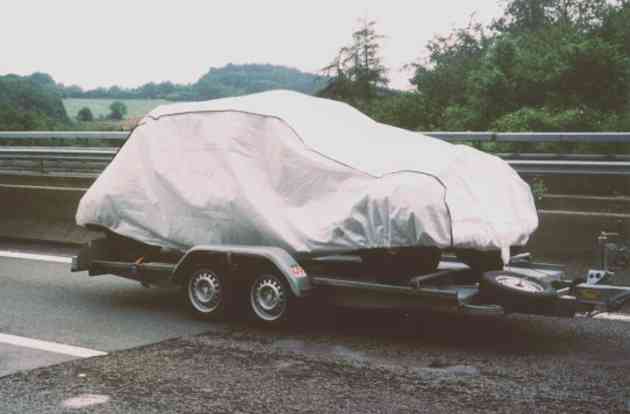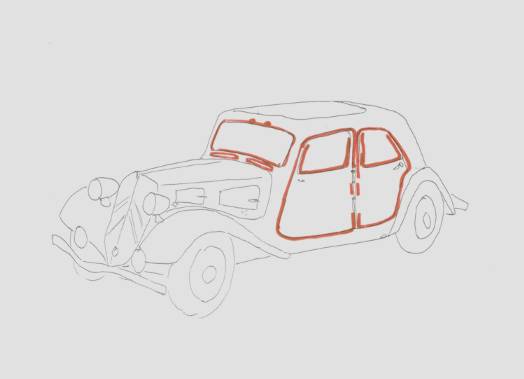 |
 |
| Car Transportation | |||
| The 7As are experimental cars so that they require great respect. To my opinion, if they are surviving until now, they must be used with parsimony and driven with limited distancese, specially if they have original parts, . Therefore, in order to participate to great meetings
hold far away from the own house, it is necessary to transport the car:
The transport experiences have been made for the
participation to the following meetings: The transportation used for the meetings has been a trailer (2 axles) pulled by a cross-country vehicle (Tractinades, Dunkerque)or by a lorry ( Versailles) that allows a speed of about 90 – 110 km/h. The trailer 2 axles pulled by the cross-country vehicle is a trailer of good quality, but for the car loading it is necessary to rake the trailer approximately 30° and the 7A, while going on the trailer, can suffer the slope for the breakable cardans. The trailer used for Versailles was for sure better (length 5,5 mt, capacity 2700 kg) much stable and with easy loading. Fixation of the car to the trailer: at the front, the car is fixed with the winch of the trailer; the rope passes around the lower arm of the front wheel. |
|||
 |
|||
|
To notice that under the car there are 2 points in which the metal sheet can cut the belt: it is necessary to place a protection to avoid the inconvenient.
Cover of the car: during the transport it is advisable to cover the car with a car cover in order to avoid damages and the rain. The
experience of the cover is made for Versailles and Dunkrque. During the
journey Milan - Versailles has been used a light car cover, used normally
in parking, which has resisted only few km before breaking. In the travel for Dunkerque it has been used a strong car cover, designed specifically for the transports on trailers. |
|||
 |
|||
|
The experience of the car cover has been, therefore, enough negative.
Car
not covered:
the transport with uncovered car seems the only possible method. It
is necessary to avoid that the rain enters inside the car.
|
|||
 |
|||
|
Transport
with truck:
drivers with trucks for car transportation are available with foreign
countires transpotation permit. For
7A 1030, the truck has been only used for a breakdown on the road. Also in
case of truck transportation,the solutions described above are applicable. To
be considered that, during the car loading/unloading on/from the truck, by
means of the truck rope, it must be avoided that the end of the exhaust
pipe touches the ground: the support is not flexible and it can be damaged. |
|||